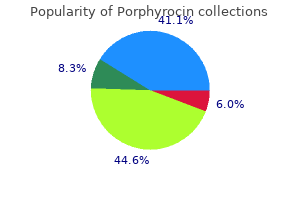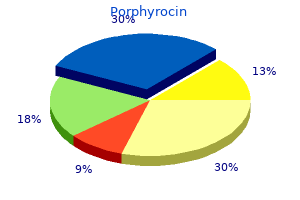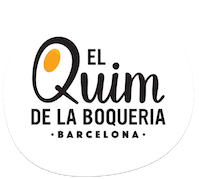"Purchase generic porphyrocin online, antimicrobial yeast infection".
By: Q. Ur-Gosh, M.S., Ph.D.
Vice Chair, Campbell University School of Osteopathic Medicine
Rope about 9-10mm (in) is usually recommended for lashings antibiotic resistance solutions order 500mg porphyrocin mastercard, throwing and mountaineering antibiotics for acne before wedding buy generic porphyrocin 250mg line. It can be used for safety lines and for climbing antibiotic treatment for strep throat order porphyrocin with paypal, provided belay and abseiling techniques are used-it is not thick enough for a hand over hand and foot grip infection under toenail purchase 500mg porphyrocin visa. A length of 30-40m (100-125ft) would then be as much as can be carried without encumbrance. Climbing rope must be elastic, to absorb some of the shock, without putting enormous strain on anyone who falls. See if it has the approval of official mountaineering bodies or conforms to the British Standard 3184 (for hawser-laid ropes). Taking care of rope Rope should be protected from unnecessary exposure to damp or strong sunlight and (in the case of natural fibres) from attack by rodents and insects. Dirt can penetrate and particles of grit work away at the fibres from inside the rope. If weather conditions will make drying possible, it is worth trying to wash a very dirty rope in clean water. Try to keep a rope for the job for which it was intended-do not use climbing rope as clothesline or lashing if you can avoid it-though in a survival situation you may have to use the same length for many purposes. Loop the rope backwards and forwards over your arm, letting it hang down about 3560cm (1824in) long. Make a loop and take this through the top part of the skein (c) and, finally, pass the ends through this loop (d). Think about the anchored end and what will happen to it when the other end reaches its target. If throwing a lifeline, for example to a fast-moving raft on water, are you going to be pulled into the water yourself? Always overthrow a lifeline so that the recipient stands a good chance of catching part of the rope, even if they miss the end. Coil half the rope onto the fingers and palm of the right hand, then raise the index finger and coil the remainder onto the other fingers only. Anchor your end if you think there will be sudden strain on it and your position is precarious. Coil the rope carefully on the ground or loop it loosely over the other hand so that it will pay out freely as you throw the missile. If throwing a weighted rope over a branch keep out of its path as it swings back towards the throwing point! The stems of nettles make first-class ropes and those of honeysuckle can be twisted together to make light lashings. While pliable vines and other long plant stems can often be used, as they are, for short-term purposes, they may become brittle as they dry out. Sources of fibres -Nettles (Urtica dioica) are an excellent source of fibres but require preparation. Soak them in water for 24 hours, then lay them on the ground and pound them with a smooth stone. But if the tree has been down too long it may have decayed too much, so test it for strength. Plaiting rope An easy method for the less experienced is to twist and plait strands. If you make three thin plaits, these can then be plaited together again for a thicker, stronger rope. If you are lengthening the strands as you plait, stagger the places at which you feed in new fibres. Take a bundle of fibres, tie the ends together, anchor it firmly and split into three separate strands (a). Keep twisting the strands and keep the plaiting as tight and even as you can make it.
Diseases
- Bronchiectasis oligospermia
- Dysmorphism abnormal vocalization mental retardation
- Chromosome 3, monosomy 3p25
- Chudley Rozdilsky syndrome
- Der Kaloustian Jarudi Khoury syndrome
- Erythroblastopenia
- Delirium
- Heart attack
- Hepatic fibrosis renal cysts mental retardation

Biomass production antimicrobial lotion generic porphyrocin 250mg overnight delivery, photosynthetic pigments antibiotics for dogs for dog bites order 250mg porphyrocin visa, leaf structure and chloroplast arrangement do not differ in exposed plants antibiotic ointment for dogs buy porphyrocin 500mg low cost. What seems to be affected is the structure of the chloroplasts accommodated in the bundle sheath cells of the exposed leaves virus living or not purchase porphyrocin canada. They suffer a slight swelling of their thylakoids and an undulation of some of the thylakoid membranes. Our current results, recent papers for the effects on Arabidopsis thaliana and Gossypium hirsutum (Stefi et al. Moreover, the effects of non-ionizing electromagnetic radiation on behavior (Divan et al. Taking in to account that: · the function of the C4 chloroplasts is uniquely associated with the function of stomata (Ghannoum, 2008). This type of stomata appears only in Graminae and is unique in structure and function. Finally, we may point out that the deformations observed in the chloroplasts may affect the mature plant by suspending the great advantage of the C4 photosynthesis. The effect of the non ionizing radiation on exposed, laboratory cultivated upland cotton (Gossypium hirsutum L. Exposed plants, compared to the negative (matched) controls, seem to be seriously affected. Notably lower biomass production for the above ground part and the root was recorded. The disastrous effect on chloroplast structure, the reduction of the photosynthetic pigments and the suppression of the photosynthetic potential, are the main 484 causes for the significant reduction of the primary productivity. Moreover, a serious effect on the underground part of the plant was recorded but this cannot be evaluated yet. The aftermath of long-term exposure to non-ionizing radiation on laboratory cultivated pine plants (Pinus halepensis M. Cotyledon, juvenile leaf, primary shoot and root structure seem similar in both control and exposed plants. Many cells of the exposed leaves possess severely deformed chloroplasts with dilated or destructed thylakoid membranes although disruption of chloroplast envelopes was not observed. The study groups matched for various demographic data including age, gender, dietary pattern, smoking habit, alcohol consumption, duration of mobile phone use and average daily mobile phone use. The analyses of data from the exposed group (n = 40), residing within a perimeter of 80 meters of mobile base stations, showed significantly (p < 0. The "exposed individuals" who resided within 80 meters of a cell antenna received an average of 5. To see excerpts from this study and related research: Cell Tower Health Effects or bit. Therefore, this study was aimed to investigate the potential genotoxic effect of mobile phone radiofrequency exposure on human peripheral blood mononuclear cells in vitro. These results indicate that exposure to millimeter-wavelength radiation has no effect on genotoxicity in human eye cells. Radiofrequency electromagnetic field exposure in everyday microenvironments in Europe: A systematic literature review. Abstract the impact of the introduction and advancement in communication technology in recent years on exposure level of the population is largely unknown. Twenty-one published studies met our eligibility criteria of which 10 were spot measurements studies, 5 were personal measurement studies with trained researchers (microenvironmental), 5 were personal measurement studies with volunteers and 1 was a mixed methods study combining data collected by volunteers and trained researchers. We found considerable differences between studies according to the type of measurements procedures, which precludes cross-country comparison or evaluating temporal trends. Measurement of the environmental broadband electromagnetic waves in a mid-size European city. Abstract In this paper, the level of exposure to broadband radiofrequency electromagnetic field in a mid-size European city was evaluated in accordance with the International Commission on Non-ionizing Radiation Protection guidelines from 1998. To show the results in an easy-to-interpret way by the citizen, the results have been represented in a set of raster maps. The measurement results obtained showed that the electromagnetic wave measured in all broadband frequency range along the city is much lower than the safety level according to the international regulations for both public and occupational sectors. This fact will be mandatory in the future because of the deployment of new wireless standards such as the fifth-generation mobile communication systems (5G) (Colombi et al. The electromagnetic sensor is based on a diode technology and it presents a sensitivity of 0.

Printed in Canada the material otTered in this book is presented as infotmation that should be available to the public virus vs virion purchase porphyrocin 500 mg free shipping. However bacteria characteristics cheap porphyrocin 500 mg otc, we urge readers to support the secure passage of fair and sane drug legislation antibiotics for uti no alcohol buy cheap porphyrocin 500 mg on line. No part of this book may be used or reproduced in any manner whatsoever without written permission of the Publisher virus 59 buy discount porphyrocin 250mg line, except in the case of brief quotations embodied in critical articles or reVlews. This book is dedicated to the many mycologists who helped to uncover the secrets behind the life cycle of these little mushrooms, and to the Mazatec peoples of Mexico, who have for centuries protected, nourished, and handed down the ceremony, knowledge, and wisdom they reveal. We would also like to thank Kat for having so generously agreed to produce a new Psi/ocybe cubensis life cycle illustration. Her beautiful artwork illuminated the pages of the book that germinated our mycological careers, and it is a great honor to have some of that same light grace our own little book. Miliaria, our little honey mushroom, for her keen photographic eye, patience, and beauty. This slim volume, with its densely packed text and fanciful, otherworldly line drawings, held for us an ilmnediate and irresistible allure. Like an illuminated manuscript or a book of spells, it glimmered and hummed with meaning, reaching out to us Јi·om the crowded shelves. It seemed less a book than a collm1unique, a missive cast out into the world, waiting silently for years to at last make its way into our hands. We already held a considerable affection for the mushrooms in question, but we had never before contemplated growing our own. Yet by the time we exited the shop, book in hand, the idea seemed self-evident, organic: Qf course, we thought, we will grow our own mushrooms! For us, this book has never lost its intense personal appeal, but we were hardly the sole intended recipients of the secrets it contained. First published in 1976, Psilocybin has been in print ever since and has sold over 150,000 copies. The methods it espouses have inspired the careers of untold numbers of mushroom cultivators and kitchen mycologists (your humble authors among them), and sparked a flurry of underground experimentation and innovation. First of all, it presents a series of methods that can be performed by nearly anyone, requiring only a limited investment in specialized tools and materials, such as a pressure cooker and Petri dishes. Though they did not invent any of the methods they espoused, they were the first to combine them into such an efficient and effective system. Finally, it is far more than a simple manual for the cultivation of psilocybin mushrooms. With its philosophical asides, lovely, phantasmagorical illustrations, and Lovecraftian speculations about the off-world origins of the organisms and their import for humankind Prologue I ix (including a statement of purpose supposedly dictated to one of the authors by the mushroom overlords themselves! As easy and reliable as the Oss & Oeric method was, it still left a great deal of room for improvement. In the 30 years since Psilocybin first appeared, many cultivation techniques have been considerably refined or supplanted entirely, and a number of new technological and mycological discoveries have been made. The purpose of this book is to update and complement the methods Oss and Oeric described. It is our hope that by creating a new resource for beginning Psilocybe mushroom cultivators, the burden of being such a resource will be lifted from that book. It is our humble wish that our efiorts here will provide concise and well organized instructions for mushroom cultivation that incorporate the most up-to-date practices. In so doing, we hope to help keep in print the book that first sparked our mushroom. This is particularly true for Psilocybe cubel1sis: there are the "Psilocybe Fanaticus Technique," methods utilizing wild bird seed, composted cow or horse manure, worm castings, and so on. As you will come to see, this is a very robust species with which to work, easily adaptable to a wide variety of substrates and conditions. Such "primary research" stands as one of the paramount joys of working in science, but it can also be its greatest frustration, particularly for a beginner. Anyone who has spent any amount of time doing scientific research eventually becomes comfortable with this seemingly skewed ratio. Early failures (often among the most catastrophic) can be so disheartening for the novice that she is inclined to give up completely.

Also infection low temperature buy generic porphyrocin online, because children get their genes from their parents treatment for dogs cold purchase porphyrocin on line, genetic tests that involve several family members can reveal personal information virus 38 order 250 mg porphyrocin overnight delivery, such as a child having been adopted or having a different biological father virus removal programs purchase porphyrocin without prescription. Sometimes, people are concerned about keeping the results of their genetic tests private. Companies that offer genetic testing are very careful to make sure that test results are kept private. Test results cannot be seen by anyone who is not involved in the testing, unless the person tested or his or her parents or guardians give permission. For more information about genes related to hearing loss and about genetic testing, contact a genetic counselor in your area. For more information about hearing and hearing loss, see the National Institute on Deafness and Other Communication Disorders at. Department of Health and Human Services has a guide that explains about genes and genetic testing at. The mitochondria prepared from liver cells were judged in good condition as they exhibited satisfactory phosphorus-oxygen and respiratory control ratios and transported Ca*+ and K+ ions in an energy-dependent manner. When mitochondria were isolated from the cells after treatment with these agonists, they displayed Z- to 3-fold increases in the rate of pyruvate carboxylation, pyruvate decarboxylation, and pyruvate uptake. These mitochondrial changes are similar to those obtained in hepatic mitochondria prepared from intact, hormone-treated rats. In the cell suspensions, the dose response curves for the activation of mitochondrial pyruvate metabolism and for increased glucose synthesis from L-lactate were coincident with four different agonists. It is concluded that the rate of mitochondrial pyruvate metabolism can be increased by hormones and cyclic nucleotides and that control of mitochondrial pyruvate carboxylation is an important regulatory site of hepatic gluconeogenesis. Glucagon or epinephrine has been shown to stimulate the rate of glucose synthesis from pyruvate and lactate in perfused livers (2-5), liver slices (6), and suspensions of liver cells (7, 8). However, no effect of hormones has been demonstrated on the in vitro activity of pyruvate carboxylase (18, 19). Changes in the mitochondrial content of acetyl-CoA have been proposed to mediate the actions of glucagon on the rate of gluconeogenesis (17). Experimentally, however, only small differences in the acetyl-CoA levels of liver (3, 5) or mitochondria (19) are measured after hormone stimulation. They reported that treatment of intact rats with glucagon or epinephrine caused an 80 to 100% increase in the rate of pyruvate metabolism by subsequently isolated liver mitochondria (19). Specifically, the mitochondria from the hormone-treated rats showed an increased rate of the first reaction in the gluconeogenic scheme, pyruvate carboxylation to oxaloacetate, and also an increase in the rate of pyruvate decarboxylation. The mitochondrial effects required the presence of intact mitochondrial membranes, as sonication abolished the hormonal differences. Sonication and osmotic swelling also increased the total activities of pyruvate carboxylation and decarboxylation, respect. The rate of hepatic gluconeogenesis is under the minute to minute control from pyruvate or lactate of various hormones (1). Although the hormonal effect on mitochondrial pyruvate metabolism is potentially an important event in the regulation of gluconeogenesis, neither the biochemical mechanism of the effect nor its actual role in the control process have been elucidated. The general experimental approach was to stimulate isolated liver cells with various hormones and cyclic nucleotides and then compare the effects of these agonists on mitochondrial pyruvate metabolism with those on cellular glucose synthesis from lactate. Suspensions of isolated liver cells were used as the experimental system, as they were more convenient than the perfused liver for multiple sampling and sequential preparation of mitochondria. The results obtained show that the specificity, sensitivity, and time course of the hormonal effect on mitochondrial pyruvate metabolism are closely correlated with those on glucose synthesis. Rats were anesthetized with 10 to 20 mg of sodium pentobarbital (intraperitoneally), and liver cells were isolated by the method of Bern, and Friend (20) as oreviouslv emoloved in this laboratorv " (8). In addition to careful selection of the collagenase used in preparing the cell suspensions (8), the following modifications helped to increase the quality of the preparations. After the isolation procedure, the cell pellets were resuspended in 20 to 30 ml of ice-cold Krebs-Ringer bicarbonate buffer (21), gassed with 95yo O&y0 Cot, stoppered, and stored in ice. The suspensions contained about 2 to 4 X lo7 cells/ml or about 25 to 35 mg of protein/ml as measured by the biuret (22) reaction. Incubations-In most experiments, 4- to 5-ml aliquots of the cell suspensions were incubated in 50-ml plastic round bottom tubes at 37" with a shaking rate of 125 cycles/min. In order to ensure adequate oxygenation, the larger aliquots (up to 35 ml) used in the time course experiments were incubated in 250-ml plastic Erlenmeyer flasks at a shaking rate of about 40 to 50 cyclcs/min.
Purchase porphyrocin with amex. World's LARGEST Drying Towel For Cars - Suv's - Trucks!.


